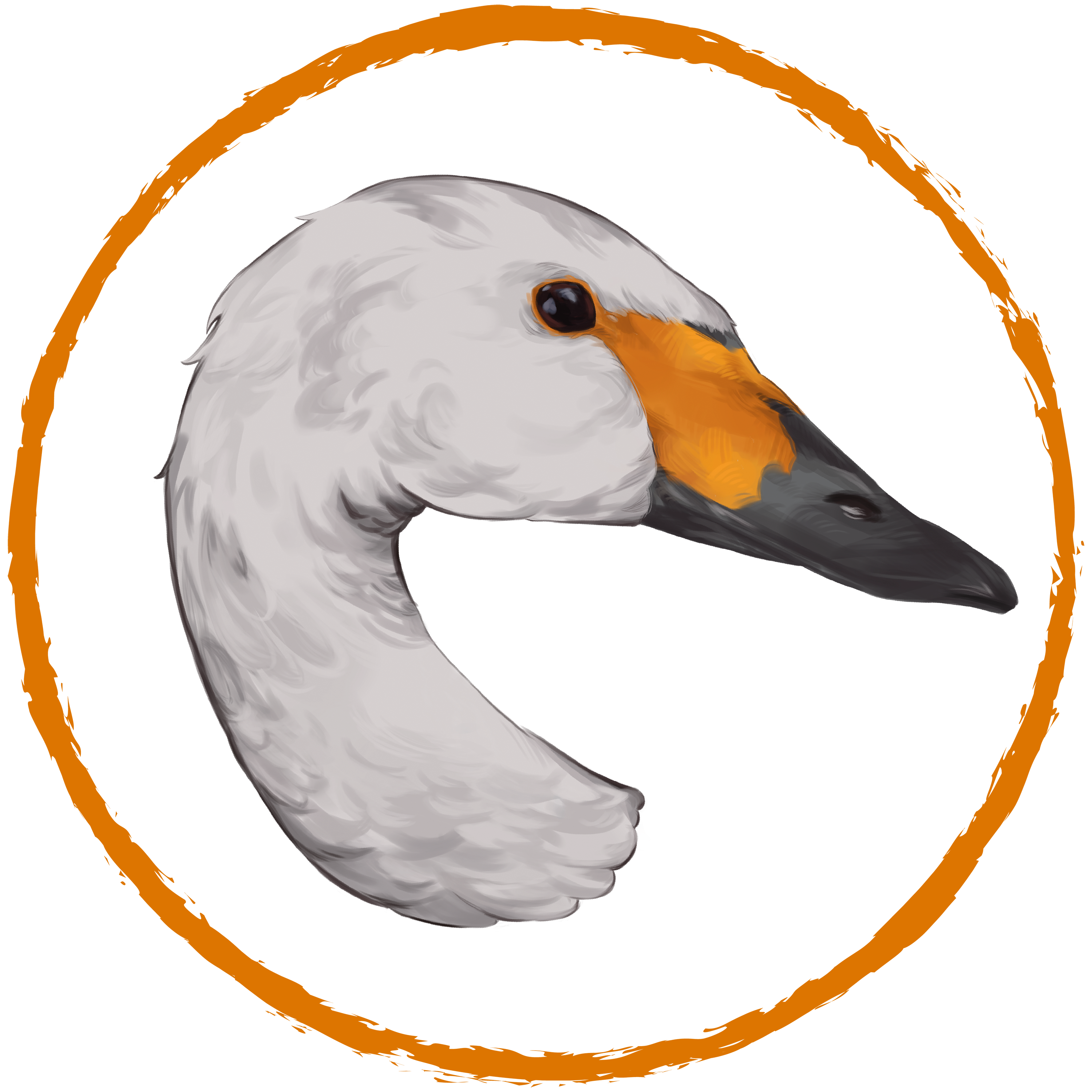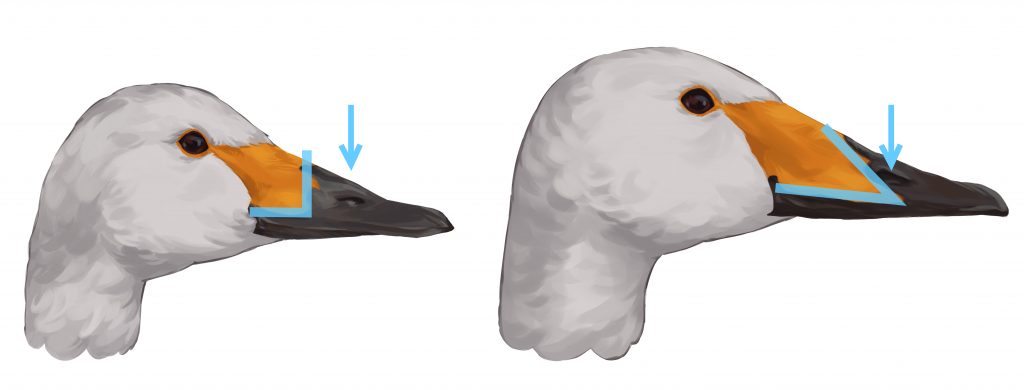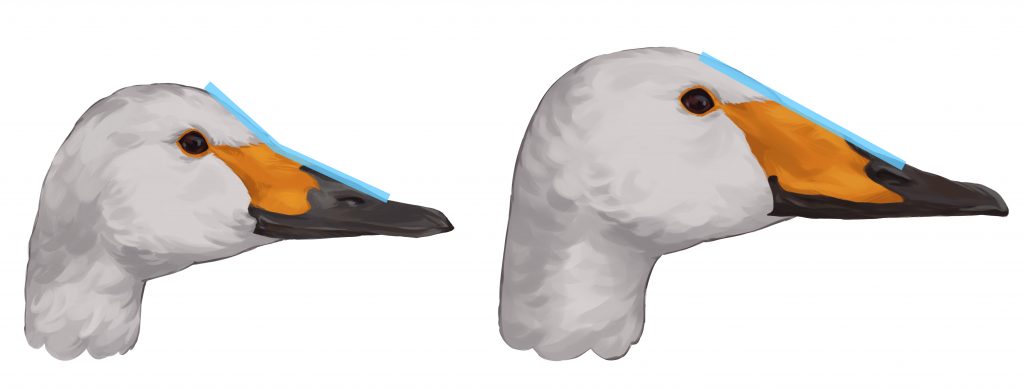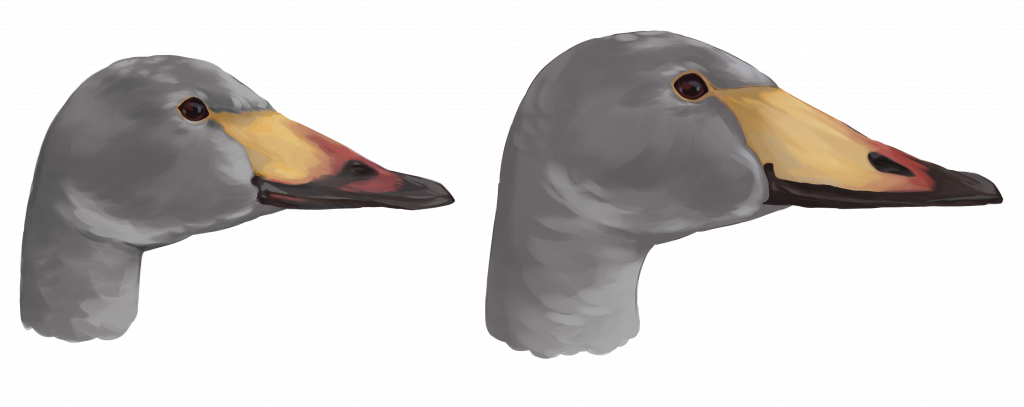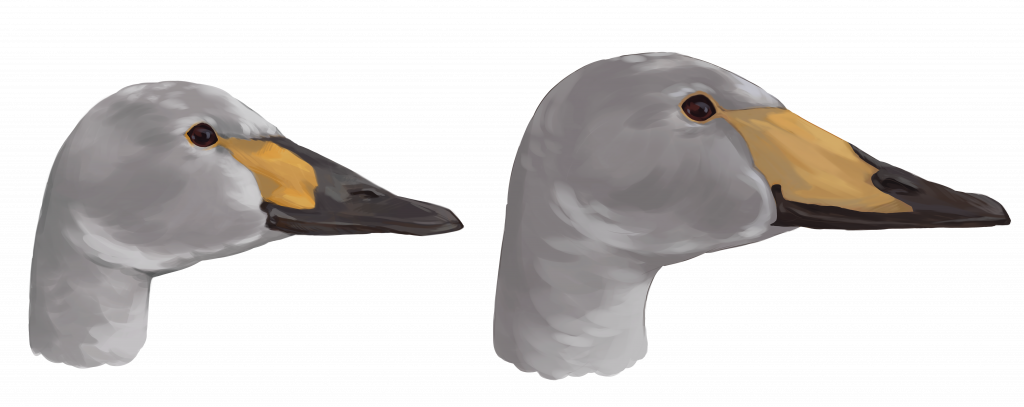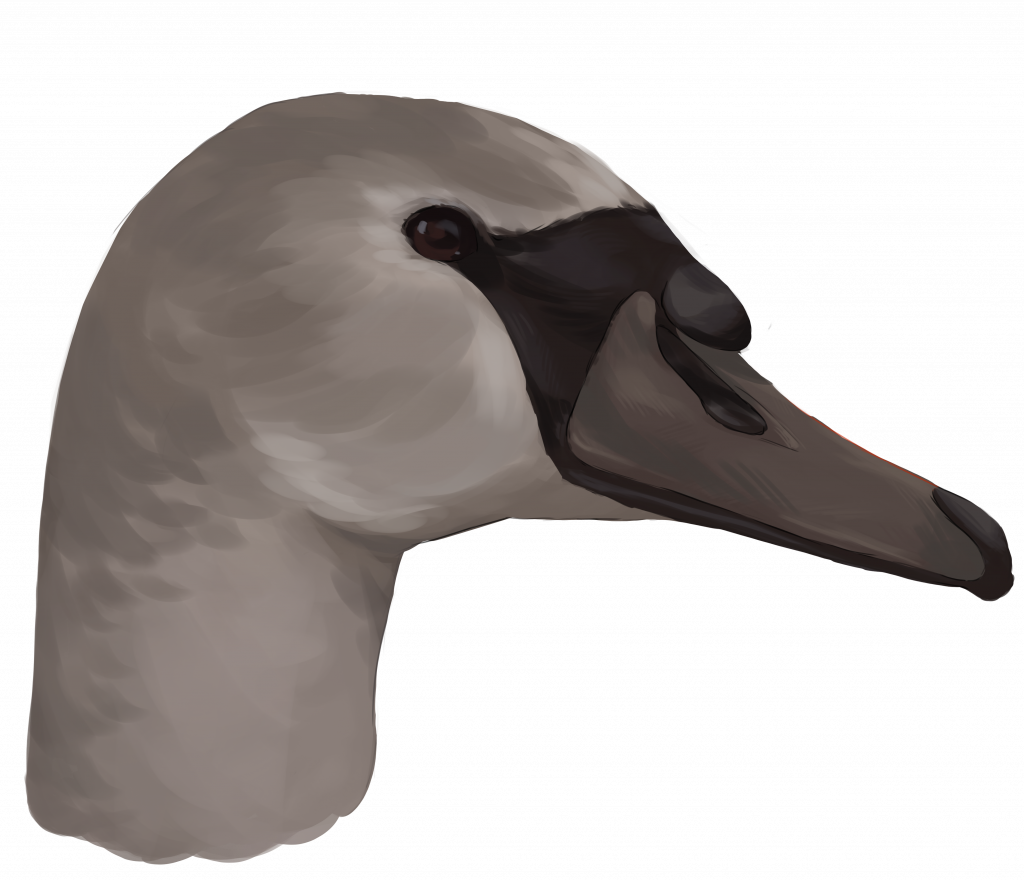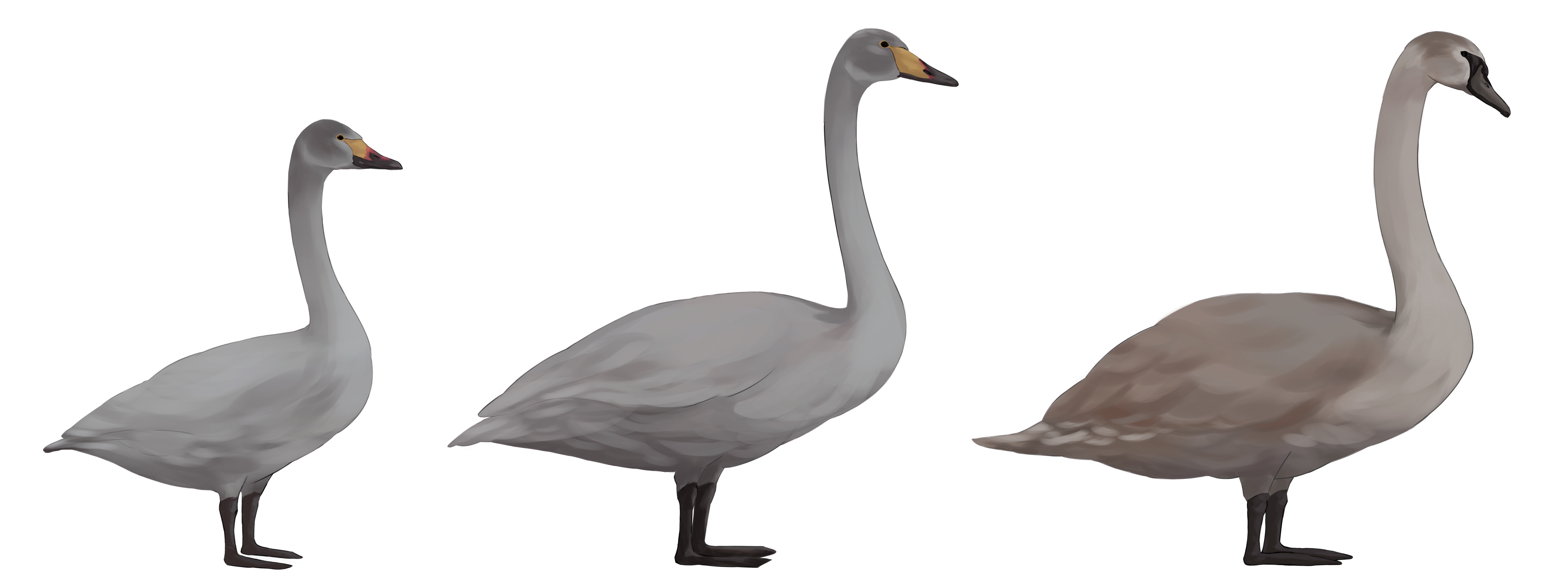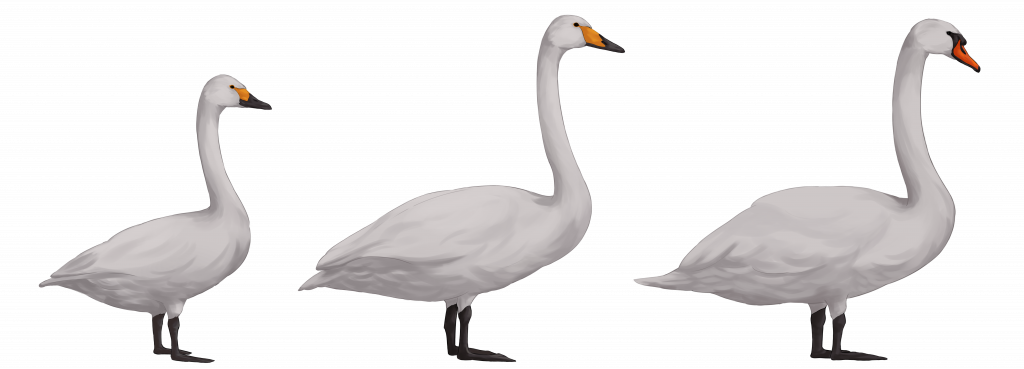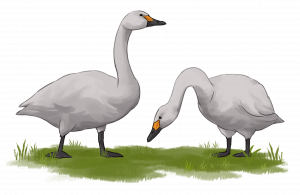Species Identification
In Germany and Europe, there are naturally three different species of swans: The most well-known is certainly the large Mute Swan (Cygnus olor). However, there are also the equally large but slightly slimmer Whooper Swan (Cygnus cygnus) and the significantly smaller Bewick’s Swan (Cygnus columbianus bewickii).
All three species have white plumage (gray in juveniles) and can be observed on water and in fields. Although the swans may look similar at first glance, they can be distinguished by distinct characteristics upon closer examination.
Head and Beak
Bewick's Swan
Whooper Swan
Mute Swan
Beak Colour | black-yellow | yellow-black | orange-black |
Colour Distribution | yellow < black | yellow > black | orange > black |
| Colour Appear. (at distance) | more black | more yellow | orange |
Colour Pattern | Yellow part ends bluntly well before the nostril | Yellow part extends wedge-shaped below the nostril | Knob at the base of the bill above the nostril |
| Profile | Rounder head, transition from bill to forehead distinct | Elongated head, transition from bill to forehead gradual | Prominent knob at the transition from bill to forehead |
Juveniles: Beak Colour | Yellow part pale yellow, black part initially pale pink | Yellow part pale yellow, black part initially pale pink | gray |
Juveniles: Colour Pattern
| Same as adults | Same as adults | Same as adults |
Illustrations for Clarification
In autumn and early winter, the black portions of the bills of Bewick’s Swan (left) and Whooper Swan (right) are still pinkish.
In late winter, the bills turn black and eventually takes on the colour pattern of adults.
The bill of juvenile Mute Swans is completely black at all times.
© NABU / Cassandra Voigt
Bewick's Swan
Whooper Swan
Mute Swan
General | Smallest swan, shorter neck and smaller body than Whooper Swan | Size = Mute Swan | Size = Whooper Swan |
Body Length | 115–127 cm | 140–160 cm | 140–160 cm |
| Weight (ø) | 4.5–7.5 kg | 9–11 kg | 10–12 kg |
Posture of head and neck | Mostly straight | Mostly straight | Mostly S-shaped |
Voice
Both Bewick’s and Whooper Swans are very vocal, with a melodic and trumpeting call, although Whooper Swans have a stronger and more trumpet-like voice. The Mute Swan is aptly named “mute swan” in English for good reason, so there is no risk of confusion here.
Bewick's Swan
Whooper Swan
Mute Swan
© Jan Sohler
© Jan Sohler
Mute Swans vocalize less in winter and are best identified acoustically by their flight noise.
Further sound samples of the Bewick’s Swans are available on xeno-canto
Further sound samples of the Whooper Swans are available on xeno-canto
Sound samples of the Mute Swans are available on xeno-canto
Seasonal Occurrence in Germany
Bewick's Swan
Whooper Swan
Mute Swan
| October – March | October – March (migratory birds) | All year |
Additionally
A fourth species found in Germany is the black-plumaged Black Swan (Cygnus atratus) with a deep red bill coloration. Originally, these were escapees from captivity that naturally occur in Australia. However, there are now breeding pairs in Germany as well.
Would you like a little more?
…then we recommend this informative video by Kalle Nibbenhagen (in German) (www.ornithologiefueranfaenger.de / Instagram: @ornithologiefueranfänger)
Data Privacy Notice: By clicking on the image to open the YouTube video, you voluntarily access content from YouTube (Google). YouTube then processes data from you, and may possibly transfer it to a country outside the EU/EEA with lower data protection standards: YouTube Privacy Policy.

